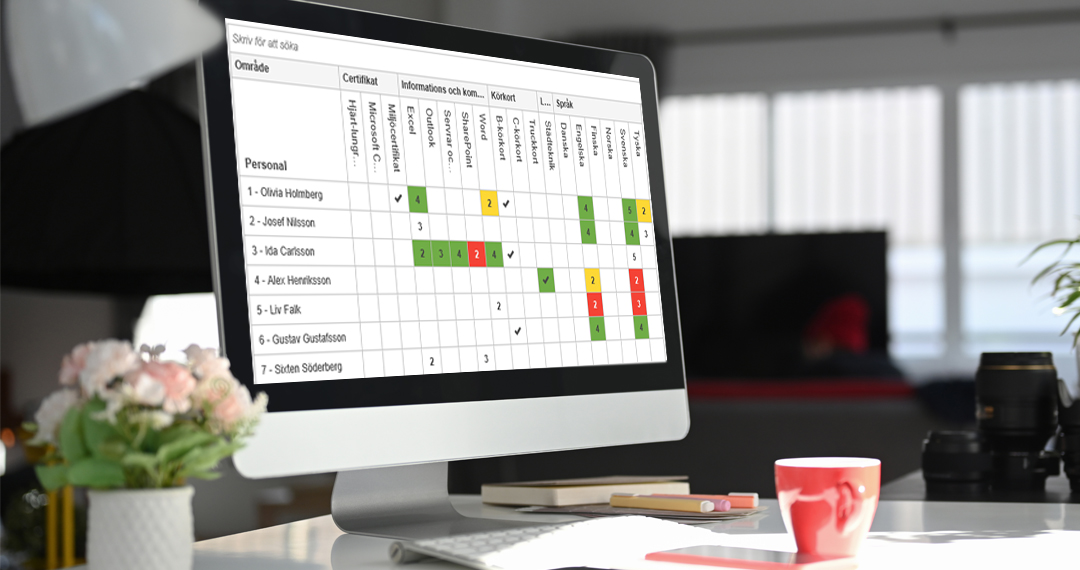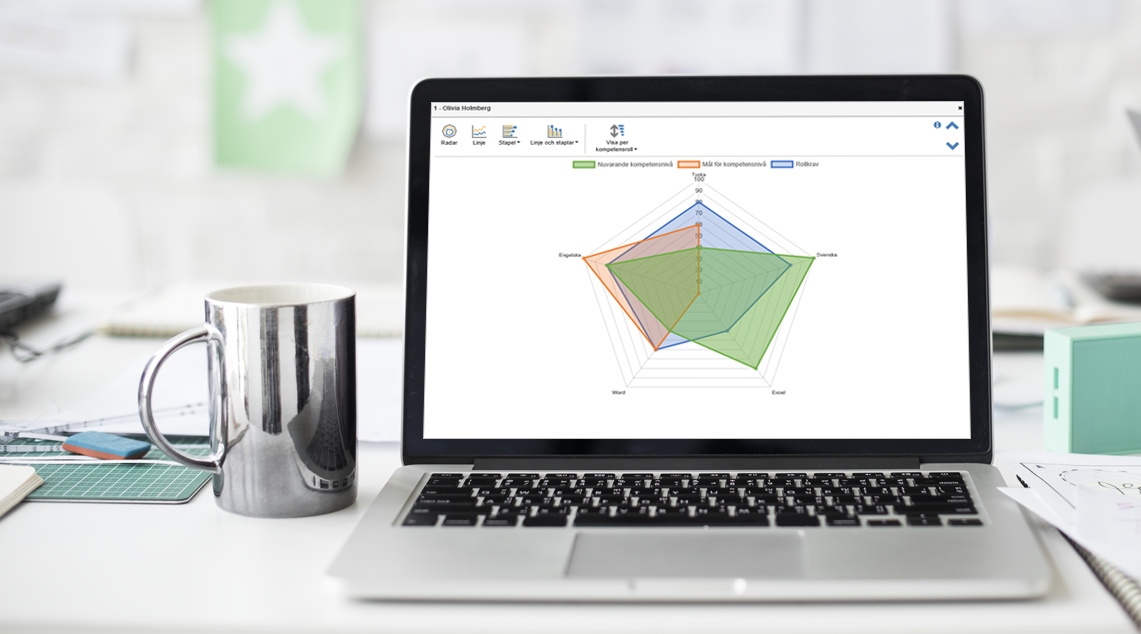Do you know what skills and competencies your employees have – and don’t have? Are you aware of who your key players and most indispensable assets are? Strategic competency management starts with a thorough inventory, i.e., competency mapping. We will guide you through the process – join us!
What Is Competency Mapping – and Why Does It Matter?
Competency mapping involves identifying the skills that are critical to achieving your goals—both now and in the future.
- Which roles and skills are most crucial for your business?
- Where are your biggest competency gaps?
- Which employees possess essential knowledge?
By comparing your current situation with your desired state, you gain the basis for making better decisions regarding recruitment, training, and future competency needs. But that's not all. Competency mapping can also help you to:
- Discover hidden talents and untapped potential already present in the organization.
- Enhance employee engagement through appropriate development opportunities.
- Reduce vulnerability by identifying critical roles in advance and having a clear succession plan when key personnel leave.
- Develop a long-term competency strategy that strengthens competitiveness.
So, how do you do this in a structured and effective way? Let's take a closer look at that now!
How to Do a Competency Mapping
There are different ways of working with competency mapping. Some companies start with gaining an understanding of the company’s needs Others start the other way around, by identifying which competencies every individual employee has (and doesn’t have). There are also different ways of collecting the information you require about the employees’ competencies, for example through interviews with the staff group, surveys, skills assessments, and staff appraisals.
No matter which methods your company chooses, the process can be summarized in four essential steps:
1. Perform a Needs Assessment
In order for the competence mapping to be fully operative, it should be based on your overall goals and needs. Perform a needs assessment where you compile which roles and positions you have in your company, which competencies are needed for each role, and which of them are most critical for you to reach your goals. Maybe you have competencies that are vulnerable, i.e. persons who have unique and valuable competency that may be difficult to replace once they leave?
You should also keep in mind that you don’t have to start the whole process at once; competency mapping can start small. For example, you can select a specific department to be a pilot group and evaluate the work before you operate fully. Or limit the number of competencies to a few core competencies that are particularly valuable for you to keep track of.
2. Map the Competence of Each Employee
This step entails the mapping of each co-worker’s skills, preferably in an HR-system together with all other data concerning the employee. This type of individual competency profile can include everything from formal courses and certifications to language skills, IT skills, or management skills. It is also useful to document the level of the employee’s competency, for example by rating it between one to five.
Once your competency profiles are documented, it is all about nurturing this treasure and keeping track of your data. The staff appraisal is a perfect opportunity for manager and employee to get an overview of, and if necessary, update, the competency profile to ensure that you have the right information that matches the company’s actual profile.
Read more: Eight Tips for a Successful Competence Management
3. Identify Competency Gaps
Where are your strengths and weaknesses, and which competency gaps need to be filled? To get an overview of the company’s competency, compare your status to your competency goals and target possible competency gaps by using a so-called competency matrix. A competency matrix can be described as a chart or a grid, where each column represents one competency and each line represents an employee, and each employee is ranked according to current competency level. Example of competency matrix with ranking of each competency with level 1-5. Driver’s license, certificates, and similar skills that the employee has or doesn’t have are marked with either a check mark or a cross.
Example of competency matrix with ranking of each competency with level 1-5. Driver’s license, certificates, and similar skills that the employee has or doesn’t have are marked with either a check mark or a cross.
Modern HR systems usually offer additional possibilities to get a graphic overview of your data, for example in the shape of a radar chart. It is an efficient way to visualize where your strengths and weaknesses are and compare your status to competency goals and competency needs. Example of competency matrix as a radar chart.
Example of competency matrix as a radar chart.
4. Create an Action Plan
Once you have a clear view of needs, current competency, competency gaps, and other critical factors it is time to create an action plan. Which efforts should be carried out in relation to your goals? Do you need to recruit, or perhaps there is an employee who either has the right competency today, or can be given supplementary training?
No matter what you choose to do as a first effort, it should be linked to a clear goal, a time plan, and a strategy of how to follow up on the results.
Let the HR system do the work with your competency mapping!
Do you and your colleagues feel that it’s time to level up your competency management? When using an intelligent digital tool, you will have the best conditions to get a good overview and structure. Forget messy spreadsheets and forms all over the place and collect all data regarding employees, competency, and competency development in one single, seamless flow.
With a few button clicks you can extract competency matrixes and other graphics that visualize your data and give you a perfect overview of existing competency, competency goals, and possible competency gaps. In short: a great success factor to secure the right competency in the right place – now and in the future.
Sounds interesting? Get in touch, and we’ll tell you more!



